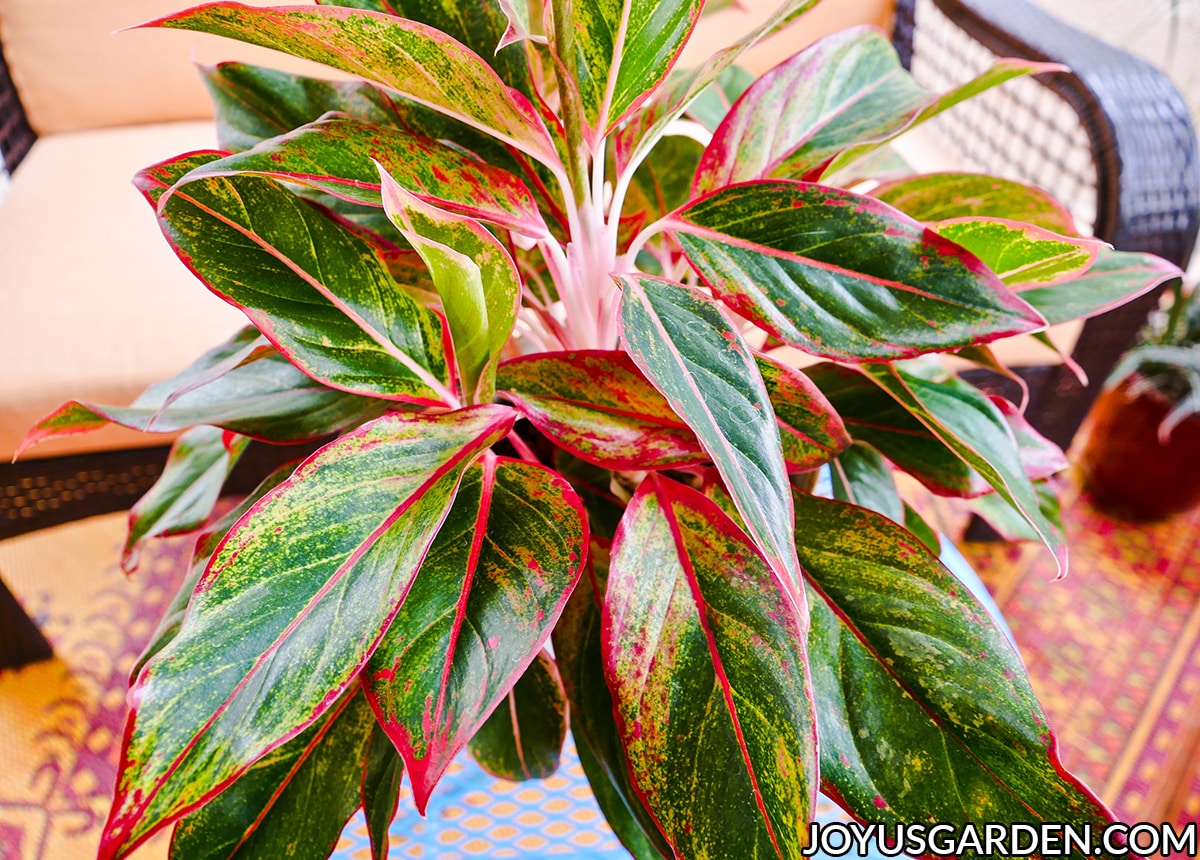Want to bring easy elegance into your home? Aglaonemas (also known as Chinese Evergreens) are the perfect choice! This guide covers everything you need to know, from watering and light to troubleshooting, empowering you to confidently nurture these vibrant beauties. Whether you’re a seasoned plant parent or just beginning, get ready to cultivate stunning, healthy Aglaonemas that will brighten any space.
Mastering Light for Vibrant Aglaonemas
Aglaonemas thrive in bright, indirect light, reminiscent of their native Southeast Asian rainforest habitat. While they can tolerate lower light, growth may be slower, and colors less intense, especially in variegated varieties. Direct sunlight, however, is likely to scorch their leaves. A north-facing window often provides the ideal balance, offering sufficient light without the risk of sunburn. For south or west-facing windows, consider using curtains or blinds to diffuse the light. Morning sun is usually gentle enough for Aglaonemas, but afternoon sun can be intense.
Understanding Light’s Impact on Variegation
Variegated Aglaonemas, with their stunning patterns of white, cream, or yellow, generally require a bit more light than their solid-green counterparts. This extra brightness helps maintain those striking patterns and prevents them from fading. If your variegated Aglaonema’s colors seem muted, it probably needs a brighter spot.
Supplemental Lighting: A Helping Hand
If your home doesn’t get much natural light, don’t worry! Grow lights can supplement natural sunlight, providing your Aglaonema with the boost it needs. Choose a grow light designed for indoor plants and position it appropriately. There’s ongoing research into the effectiveness of different types of grow lights, so staying updated on the latest findings can be beneficial.
Watering Your Aglaonema: The Goldilocks Approach
Aglaonemas prefer slightly moist, but not soggy, soil. Overwatering is a common pitfall and can lead to root rot, a serious threat to your plant’s health. Allow the top inch of soil to dry out completely between waterings. The frequency will vary depending on factors like pot size, environmental conditions, and the time of year. During winter dormancy, reduce watering considerably. A good rule of thumb is to water thoroughly when the soil is dry to the touch, ensuring water drains from the drainage holes. Always discard excess water collected in the saucer.
Creating the Ideal Environment: Temperature and Humidity
Aglaonemas prefer warm, stable temperatures between 65°F and 80°F (18°C – 26°C), similar to their native tropical environment. Avoid placing them near drafty windows or air conditioning vents, as sudden temperature fluctuations can stress the plant.
As tropical plants, Aglaonemas thrive in higher humidity. Dry air can cause brown, crispy leaf tips. Grouping plants together, using a humidifier, or placing your Aglaonema pot on a tray filled with pebbles and water can create a more humid microclimate.
Soil and Repotting: The Foundation for Healthy Growth
Well-draining soil is critical for Aglaonemas. A mix that includes peat moss, perlite, and vermiculite provides good drainage and aeration. You can also use pre-mixed potting soil formulated for Aglaonemas. Repot your Aglaonema every two years, or when the roots become pot-bound, using a slightly larger pot and fresh potting mix. This gives the roots room to grow and replenishes nutrients.
Routine Care: Pruning and Cleaning
Regular pruning and cleaning can keep your Aglaonema looking its best. Snip off any yellowing or dead leaves with clean scissors to promote new growth and improve air circulation. Dust can accumulate on leaves, hindering photosynthesis. Regularly wipe the leaves with a damp cloth to keep them clean and shiny.
Troubleshooting Common Aglaonema Problems
Even with diligent care, issues can arise. Here are a few common problems and how to address them:
| Problem | Possible Cause(s) | Solution |
|---|---|---|
| Yellowing Leaves | Overwatering, underwatering, nutrient deficiency | Adjust watering frequency, fertilize during the growing season (spring/summer) |
| Brown Leaf Tips | Low humidity, inconsistent watering, fluoride in water | Increase humidity, maintain consistent watering, use filtered/distilled water |
| Pests (spider mites, mealybugs, scale) | Infestation | Treat with insecticidal soap or neem oil, isolate the infested plant |
| Leggy growth | Insufficient Light | Move to brighter indirect light or use a grow light; Consider pruning to encourage bushier growth |
| Drooping leaves | Overwatering, underwatering, temperature stress | Check soil moisture, adjust watering; Ensure stable temperatures |
Exploring Aglaonema Varieties
Different Aglaonema varieties may have slightly different care preferences, particularly regarding light needs. While the general guidelines apply to most, research specific varieties for optimal results. For example, the ‘Silver Queen’ thrives in bright, indirect light and prefers slightly higher humidity, while the ‘Emerald Bay’ tolerates lower light conditions. Some experts believe that certain varieties may also be more susceptible to pests or diseases. There’s ongoing research in this area, and new insights are constantly emerging.
Propagating Your Aglaonema: Sharing the Love
Aglaonemas are easy to propagate, allowing you to expand your collection or share with friends. Stem cuttings are a simple and effective method. You can also divide the plant when repotting. Numerous online resources and communities share propagation tips and tricks. Some suggest that using rooting hormone can increase the success rate of cuttings.
By understanding your Aglaonema’s needs and providing consistent care, you’ll be rewarded with a thriving, beautiful plant. Happy growing!
Discover the understated elegance and practicality of accessible beige cabinets, where sophisticated design meets effortless functionality.
- Dora the Explorer Wipe-Off Fun: Safe & Mess-Free Activities for Little Explorers - April 18, 2025
- Does Lemongrass Repel Mosquitoes? Fact vs. Fiction + How to Use It - April 18, 2025
- Do Woodchucks Climb Trees?Fact vs. Fiction - April 18, 2025










